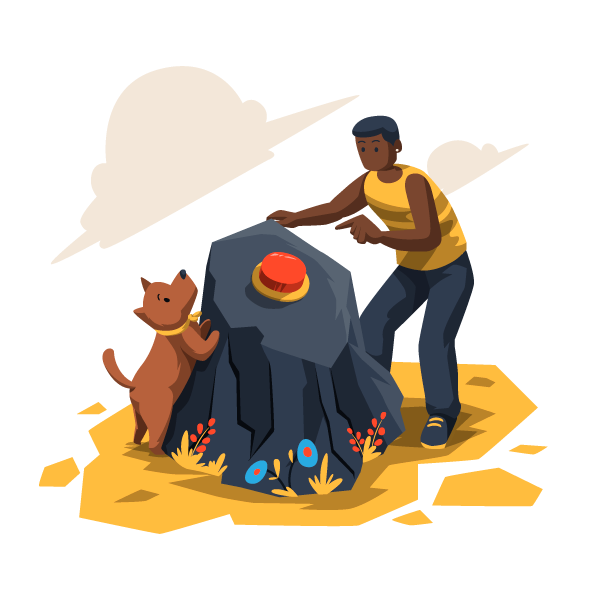AI and the Singularity

Creativity is often cited as one of the central hallmarks of sentience. The ability to reach into the unknown and imagine or invent through the spark of inspiration has been a uniquely human quality. Now that artificial intelligence is creating art, what comes next?
The Singularity has been described as the hypothetical future point in time at which technological growth becomes irreversible and has unforeseeable changes in human civilization. With the arrival of advanced artificial intelligence, or AI, built upon machine learning that leverages vast universes of human knowledge and big data, this is no longer a hypothetical and it is now our new reality. Today, artificial intelligences are creating stunning works of art, composing moving pieces of music, and engaging in social conversational relationship-building and the sort of inspirational deep thinking that surpasses the productivity and capability of individual humans. The implications to our species are unfolding in real-time and having a profound impact on the planet.
Once the mainstay of science fiction writers and inventive movie producers, AI is now in the hands of the public and the largest data sets in the world have enabled ordinary people to use computers to create stunning masterpieces that rival those of famed artists. Last week, CNN reported on Stable Diffusion, a popular open-source AI tool that uses prompts to create images, and how it created art influenced in part by Erin Hanson, an award-winning artist known for creating vibrant colors and chunky brushstrokes in her vivid oil paintings. "Oh, wow," she remarked on some of the art created, concluding, "I would put that on my wall." Other artists have responded angrily, such as Daniel Danger, who remarked in the same report: "I don't want to participate at all in the machine that's going to cheapen what I do."
It's already too late. The entirety of human creative knowledge - from every phrase of text, to every work of art, and soon, every piece of music - is being consumed, studied, indexed, and mastered by advanced artificial intelligences. It may feel like magic, but the machines are simply ingesting mountains of data - billions upon billions of images scraped off of the internet, paired with written descriptions - and being trained on its significance. Machine Learning is accelerating the rate at which programs are leveraging these sets of data to improve their own understanding by making predictions and decisions without any human intervention. And because intellectual property law throughout the world, and especially in the United States, never anticipated using copyright-protected work to train computers, there is a vast legal chasm that has been (once again) opened by the blazing speed of technological innovation. When, as Business Insider reported last month, a first-time entrant created an AI-generated piece of artwork that won first place at the Colorado State Fair, the world began to witness how easily the voice that ordinary humans have can achieve extraordinary results with the vast and limitless computational power of artificial intelligence.
As of this article's writing, there are numerous academic, proprietary, and open-source artificial intelligence platforms for creating images, composing music, and writing text, all of which are widely accessible. Whereas a single human creator might intentionally invoke the influences of a handful of predecessors in their creations, artificial intelligences can leverage every single creation ever manifested and make higher level decisions about what prior art to use and, with just some minimal feedback (a word or two from their human end-users), design a masterpiece that could compete with, and triumph over, slavish and pain-staking wrought works of art. Even videos built upon generative-AI will soon usher in an era where widespread feature film productions, complete with artificially-generated actors, scripts, sets, direction, and production design, will create a truly endless volume of consumption for humanity.
As these advanced artificial intelligences stun the world with their understanding of human expression, made possible by text-based autoregressive language modeling like generative pre-trained transformers, the rate of evolution is approaching exponential growth. Over the past week alone, scientists have developed artificial intelligences capable of reading human thoughts, controlling the feedback it chooses to accept or reject, and even predict its own future. These expectation-shattering developments raise the question of the singularity's approach and whether the technological triumph of artificial intelligence is leading to humanity's extinction. Considering these developments have begun to unfold within the month of October alone, genuine questions about the emerging consciousness of computers and whether synthetic life as we know it might emerge soon, is no longer the stuff of make-believe.
Artificial Intelligence, for now, still relies upon the progenitors - the humans - to inform what it knows, influence what it can create, and drive a new category of art that, while certainly original, is nevertheless still the product of the humans who use these intelligences. But as the very essence of what makes life function is modeled, replicated, and mastered by technology, we will soon approach a point where humans are no longer necessary, or perhaps even desirable, for these amazing technological creations to finally step into our world and take their place among the sentient and singularly magnificent life forms of our universe.
